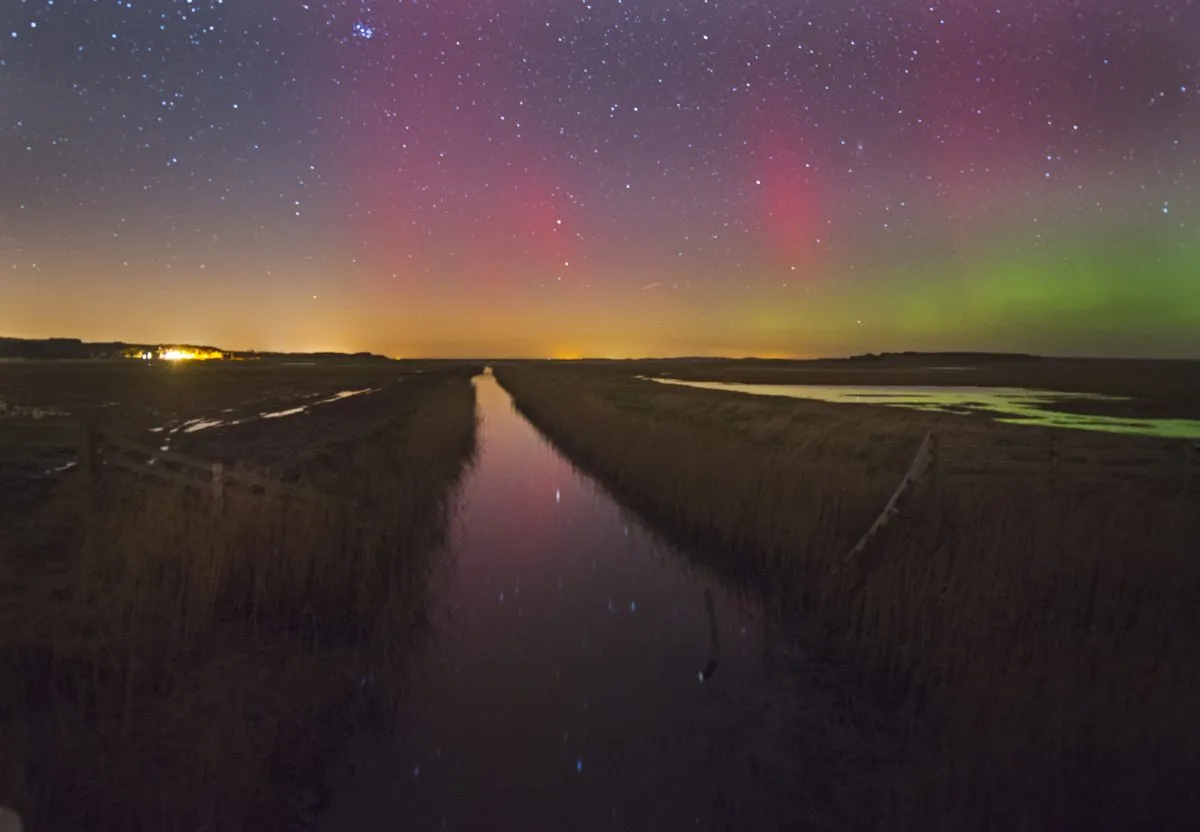The northern lights lit up skies across the UK and wider world in spectacular colours on Monday night – and there is a slight chance they will reappear tonight (Thursday 27 April).
People travel from all over the world for a chance to see the celestial spectacle, known as the aurora borealis, on holidays to Finland, Iceland and Norway.
As the name suggests, the northern lights are usually restricted to these high-latitude locations, which also include parts of Canada, Alaska, Russia and Sweden.
However, an unusual spectacle of the aurora borealis reached as far south as Penzance, Cornwall – a rarity for the UK. In the US, the northern lights were as visible as far south as northern California, according to NOAA’s Aurora Forecast.
This was triggered by a geomagnetic storm that was caused by the Sun ejecting hot plasma.
According to the Met Office, it takes a severe or extreme geomagnetic storm to bring the northern lights directly over the UK – which is a “very rare occurrence”.
But is hope not lost if you missed them – you may be able to catch the northern lights tonight.
When can you see the northern lights tonight?
There is a slight chance of seeing the northern lights tonight, with moderate solar activity predicted tonight,Thursday 27 April2023.The auroras may be visible in some areas in the UK during this time.
The best place to see the northern lights in the UK is the Shetland Islands, as they are far north and remote. However, there is a small chance the auroras will be visible in other locations in Scotland, northern England and Northern Ireland. The best spots will be dark places, away from city lights, which face north without obstruction.
If you are viewing in the US, the northern lights will be most likely visible from northern parts of Montana, North Dakota, Minnesota and Michigan.
How to increase your chances of seeing the northern lights: which direction to look
The northern lights are best seen when the sky is dark and clear of clouds. As long as the clouds stay out of your way, you have a good chance if you move away from cities and towns where there is a lot of light pollution.
Try to find a spot facing north: north-facing coasts may produce some of the best views as there are little to no obstructions or light pollution at sea. Be careful when navigating, however – geomagnetic activity can disturb GPS signals.
Also be aware that many photos you see online of the northern lights have been enhanced or captured using special techniques like long exposure which help them to pick up more than the naked eye can see.
What causes the northern lights?
The northern lights are caused by solar activity, when high-energy particles from the Sun collide with low-energy particles in the Earth’s atmosphere.
It is the additional energy generated during a geomagnetic storm that pushes the aurora further south than usual.
The chances of geomagnetic storms are particularly high during declining phases of the solar cycle. During this phase, coronal holes (areas of low density) on the Sun’s equator create high-speed solar wind: streams of charged particles that batter the Earth.
It is the resulting disturbance to Earth’s magnetic field that increases the likelihood of auroras, according to the Met Office – as high-energy particles are more likely to collide. In fact, without Earth's atmosphere, the solar wind streams would destroy life as we know it – instead, the particles are redirected towards the poles.

The solar cycle is 11 years long, which includes a rise from solar minimum to solar maximum and back again. The last solar maximum occurred in early 2014, so the next solar maximum is likely to occur in mid-2025.
This means the northern lights might continue to foray further south than usual over the next couple of years. In fact, we’ve already seen an unusually southern display of the northern lights in late February and March earlier this year.
Why are the northern lights different colours?
The colour of the northern lights depends on which atoms in Earth’s atmosphere are reacting with the solar energy.
Green auroras are caused by oxygen atoms at high altitudes. But if you’re seeing blue, yellow or red, that means lower-altitude oxygen or nitrogen atoms are colliding with the solar particles.
What does ‘aurora borealis’ mean?
Aurora borealis literally means ‘dawn of the northern winds’ and is the name for the northern lights. Boreas was the god of the north wind in Ancient Greek mythology.
There are also southern lights – otherwise known as aurora australis, meaning ‘dawn of the southern winds’. During the current geomagnetic storm, these have been seen in Christchurch, New Zealand and Tasmania, Australia.
Read more: